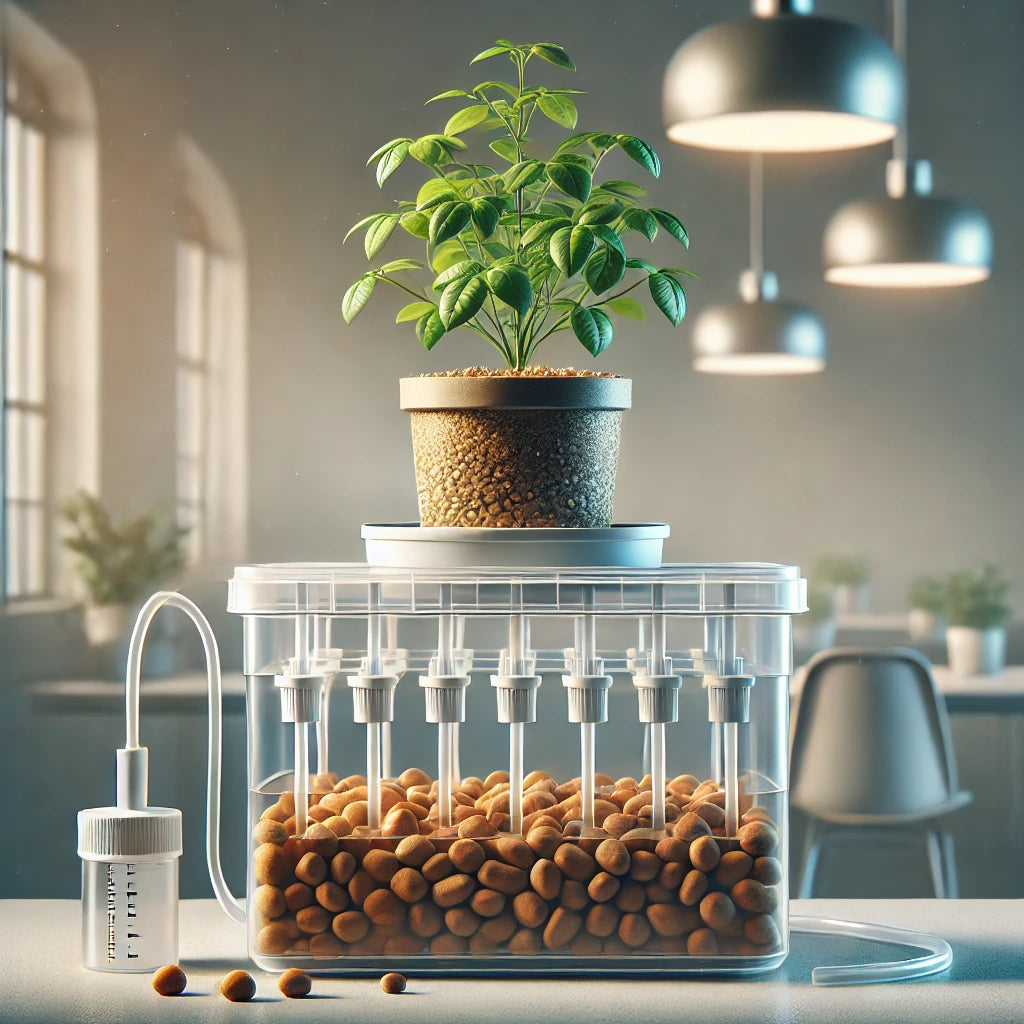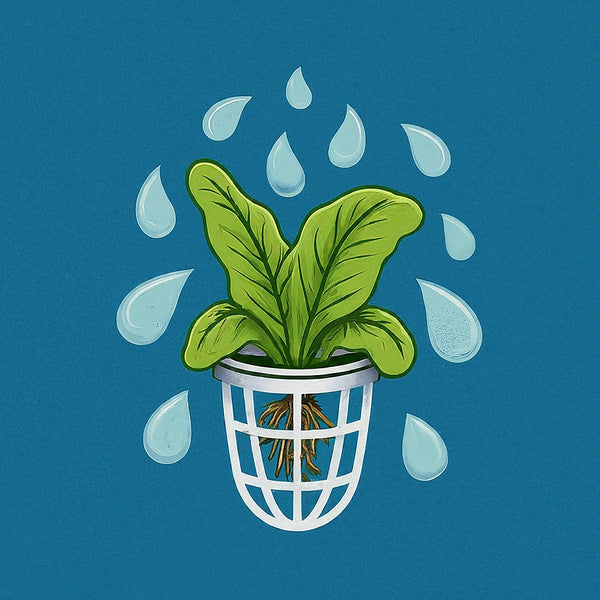
Choosing the Right One for Your Needs
Share
What Is Hydroponics?
Hydroponics involves growing plants in a nutrient-rich water solution. Instead of soil, plants may use inert mediums like perlite, coconut coir, or clay pellets to support their root systems. This method promotes faster growth, higher yields, and efficient use of water and nutrients.
Types of Hydroponic Systems
-
Deep Water Culture (DWC)
- How it works: Plants are suspended in a nutrient solution with their roots submerged in water. An air pump ensures oxygenation.
- Pros: Simple to set up, low cost, great for beginners.
- Cons: Limited to certain plants like lettuce and herbs.

-
Nutrient Film Technique (NFT)
- How it works: A thin film of nutrient solution flows through sloped channels, keeping plant roots moist and nutrient-rich.
- Pros: Efficient use of water and nutrients, suitable for leafy greens.
- Cons: Requires precise setup and monitoring, not ideal for larger plants.

-
Drip System
- How it works: Nutrient solution is dripped onto the base of each plant through a network of tubes. Excess solution is collected and reused.
- Pros: Customizable, scalable for various plant sizes.
- Cons: More complex setup, risk of clogged drippers.

-
Aeroponics
- How it works: Plant roots are suspended in the air and misted with a nutrient solution.
- Pros: Fastest growth rates, excellent oxygen exposure.
- Cons: High maintenance, costly equipment.

-
Ebb and Flow (Flood and Drain)
- How it works: The system periodically floods the growing area with a nutrient solution, which then drains back into a reservoir.
- Pros: Suitable for a wide range of plants, reusable nutrients.
- Cons: Requires precise timers, not ideal for water-sensitive plants.

-
Wick System
- How it works: Nutrients are delivered to plant roots via a wick that absorbs the solution from a reservoir.
- Pros: Inexpensive, passive (no pumps needed).
- Cons: Limited to small plants, slower nutrient delivery.

Factors to Consider When Choosing a Hydroponic System
-
Space Availability
- Small spaces like balconies are ideal for compact systems like NFT or DWC.
- Larger areas can accommodate drip systems or ebb and flow setups.
-
Plant Type
- Leafy greens thrive in NFT and DWC systems.
- Larger fruiting plants like tomatoes may require drip or aeroponic systems.
-
Budget
- Beginner-friendly systems like wick or DWC are affordable.
- Advanced setups like aeroponics require a higher initial investment.
-
Maintenance Level
- Some systems, like wick and DWC, are low-maintenance.
- Others, such as aeroponics, need regular monitoring and care.
-
Scalability
- Choose a system that allows expansion if you plan to grow more plants in the future.
Tips for Success in Hydroponics
- Start small with a beginner-friendly system.
- Invest in quality equipment, such as pH meters and grow lights.
- Regularly monitor nutrient levels, pH, and water temperature.
- Keep learning! Hydroponics is a dynamic field with room for experimentation.
Conclusion
Choosing the right hydroponic system is the first step to a rewarding journey of soilless gardening. Whether you're growing for personal use or planning to scale up, understanding your needs and the system's capabilities will set you up for success. With hydroponics, you can enjoy fresh, homegrown produce no matter where you live.
Are you ready to get started? Explore different hydroponic systems and watch your plants thrive like never before!
